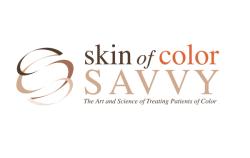
OR WAIT null SECS
FDA Extends Shelf-Life for Naloxone Nasal Spray
The US Food and Drug Administration (FDA) has extended the shelf-life of 4 mg naloxone hydrochloride nasal spray (Narcan) for nonprescription, over-the-counter (OTC) use from 3 years to 4 years.1 The FDA’s request was one of many steps the Agency has taken recently to prevent overdoses and reduce the risk of overdose-related deaths by increasing access to the drug and other overdose reversal agents.
Naloxone, a drug that has no abuse potential and is not a controlled substance, has been proven to rapidly reverse the effects of opioid overdose. First approved as a prescription drug in 2015, Narcan nasal spray has become synonymous with the ongoing opioid epidemic.2
An initial shelf-life extension was approved from 2 years to 3 years in August 2020. In March 2023, the approval for OTC use, which applies only to Narcan nasal spray from Emergent BioSolutions, arrived as the country faced a wave of drug overdoses claiming more than 100,000 lives annually.2
“Naloxone is an important tool in addressing opioid overdoses,” stated Marta Sokolowska, PhD, deputy center director for Substance Use and Behavioral Health in FDA’s Center for Drug Evaluation and Research. “Today’s shelf-life extension of newly manufactured lots of Narcan 4 mg nasal spray supports the FDA’s Overdose Prevention Framework and efforts to ensure more OTC naloxone products remain available to the public.”1
The approval only applies to nasal spray products produced following today. The shelf-life of products produced and distributed prior to the announcement have not been affected; therefore prescribers, patients, and caregivers should continue to adhere to the expiration date printed on the product’s packaging and labeling.
“FDA’s request for this shelf-life extension is a testament to the Agency’s continuing progress towards implementing the FDA Overdose Prevention Framework, which provides our vision to undertake impactful, creative actions to encourage harm reduction and innovation in reducing controlled substance-related overdoses and deaths,” the Agency stated. “As we move forward in executing that vision, we remain focused on responding to all facets of substance use, misuse, overdose, and death through the 4 priorities of the framework.”1
References
- Center for Drug Evaluation and Research. (2024, January 17). FDA announces shelf-life extension for naloxone nasal spray. U.S. Food and Drug Administration. https://www.fda.gov/drugs/drug-safety-and-availability/fda-announces-shelf-life-extension-naloxone-nasal-spray#:~:text=In%20March%202023%2C%20FDA%20approved,%2Dyears%20to%203%2Dyears.
- Campbell, P. (2023, April 20). FDA approves Narcan Nasal Spray for over-the-counter use. HCP Live. https://www.hcplive.com/view/fda-approves-narcan-nasal-spray-for-over-the-counter-use


